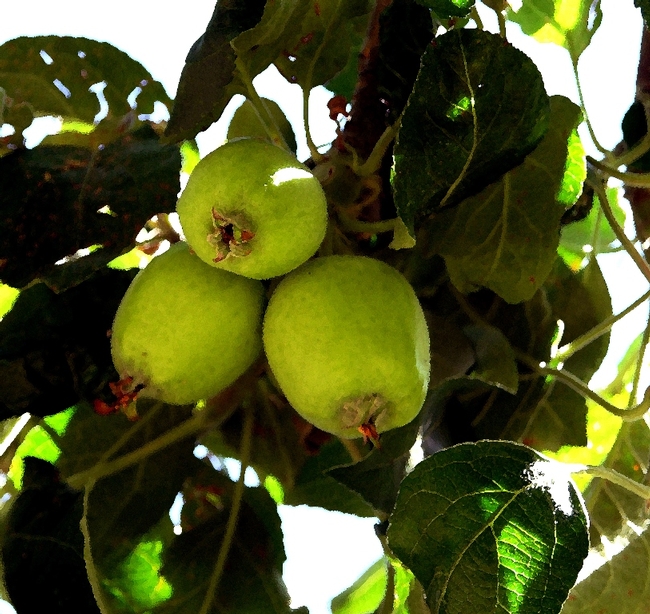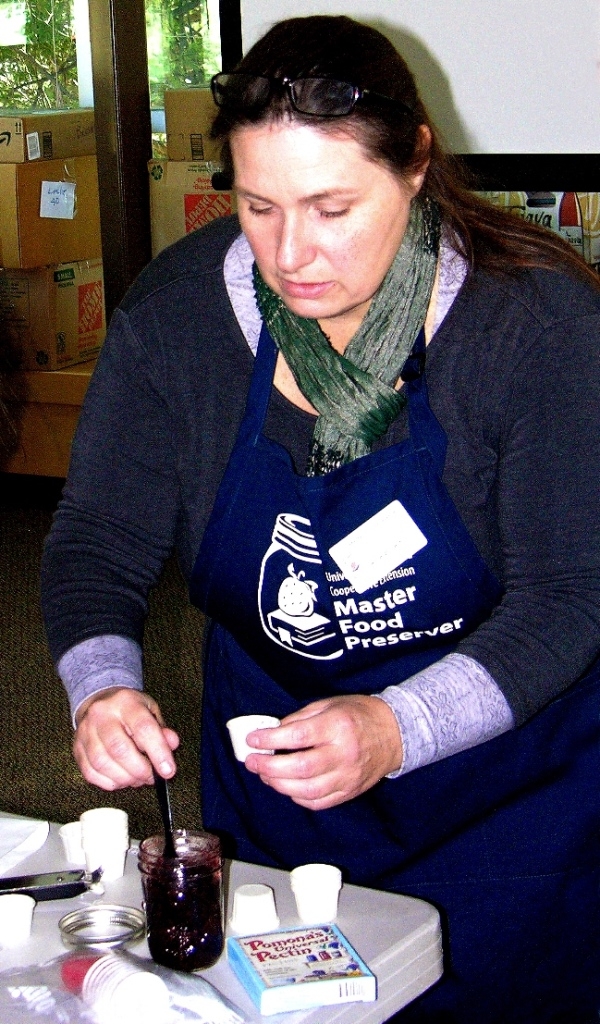San Bernardino County Master Gardeners and Fruit Preservers brought their Fruit Trees, Drought Efficient Trees and Shrubs Seminar to the Crestline Library, on Saturday, February 24. The well-attended workshop provided information tailored to the gardening needs of mountain residents.
Yucaipa Master Gardeners Jillian Kowalczuk and Adam Wagner began the day with fruit trees. Why do some trees love the mountains more than others? Looking around our neighborhoods, we see many healthy apple and cherry

Tree Selection & Care
Among cool weather-loving trees, we have many choices. The local nursery staff can help identify trees best suited to the specific area. Today new varieties are developed for flavor, tree size, and hardiness. They range from tasty hybrids, to dwarf trees that give fruit that can be harvested from the ground, without using a ladder. Once you have settled on the right tree, Jillian and Adam offered best-practices for preparing soil, planting, and caring for the tree. Nursery-bought trees don't always arrive in top condition, especially container trees which may have crowded or damaged roots. Bare-root trees are often less expensive, and can be easier to establish. Jillian and Adam concluded with tips on setting up drip watering for fruit trees, and pruning methods that promote both healthy trees and bountiful harvests.
Fruit Preserving & Canning
San Bernardino County Master Food Preservers is a sister program to Master Gardeners. Once we establish our
Finding the Right Plants for Mountain Locales
Local Master Gardeners Shelly Eagan of Big Bear, and Ken Witte of Lake Arrowhead, led the afternoon session with a focus on sustainable practices for mountain gardens. Shelly is a garden and landscape designer with a wealth of experience helping mountain residents select and care for trees and shrubs. Among her tips was to have your correct USDA and Sunset zone information in hand when choosing plants. In communities from Big Bear to Running Springs, Lake Arrowhead to Crestline, Shelly pointed out, there are a variety of zones, and several micro-climates can exist side-by side in our own yards. In observing such factors as wind direction, slope versus flat land, filtered or reflected sunlight, and so on, we can map our yards for hydro-zones, where plants are grouped according to water needs. Shelly gave examples of tried-and-true trees and shrubs, reminding participants that though a tree or shrub may be labeled “drought resistant,” new plantings need to be watered in the first two years, so their roots can take hold. Trial and error is part of the game for mountain gardeners, and attendees shared stories of hard-to-grow plants. Ken Witte concluded the day, sharing his work with the Heap's Peak Arboretum in Sky Forest. The Rim of the World Interpretive Association has collaborated with local scout troops to place educational signage along the trails at the Arboretum. Ken showed a series of Internet-based resources that feature mountain ecology, with information on native plants and their animal communities. For those of us hoping to establish native gardens at home, the Arboretum demonstration garden is a tremendous resource. While walking the trails, we can observe plants, birds, and insects in their ideal habitats, and figure out what species might suit our micro-climates. The Heaps Peak Arboretum offers a bi-yearly native plant sale, and is open year-round to visitors. Ken's information on mountain species is available at the Heap's Peak Arboretum web site: http://www.heapspeakarboretum.com/.